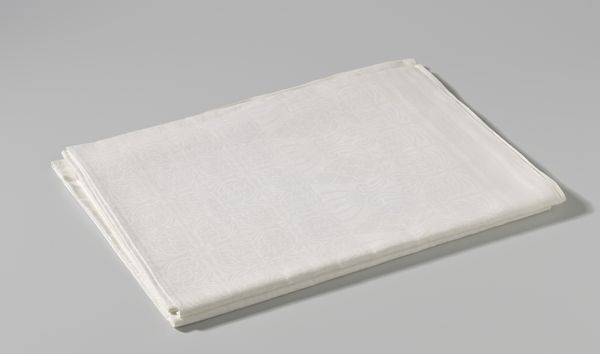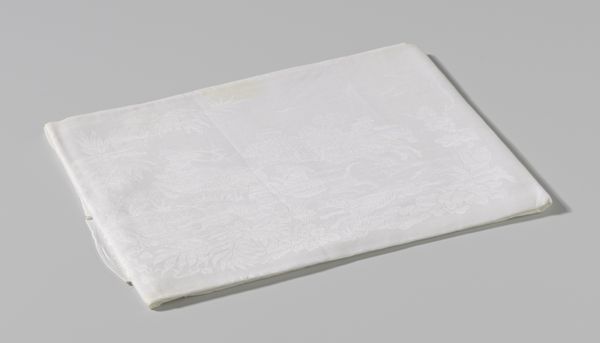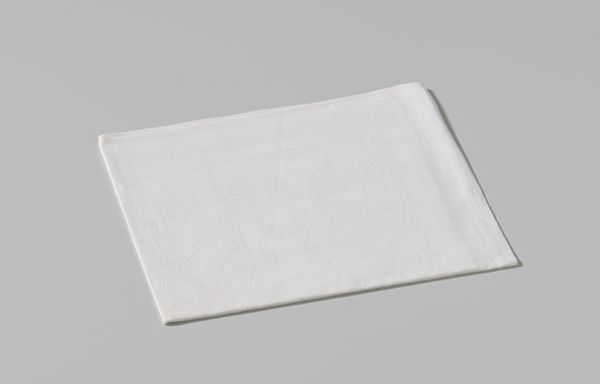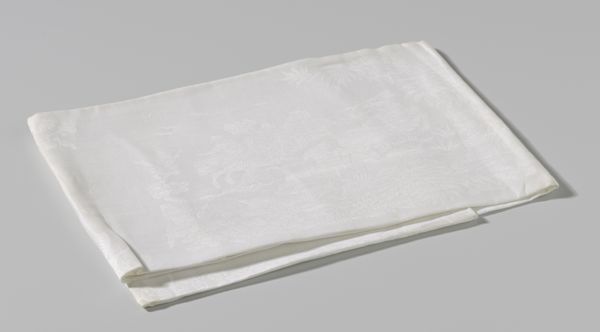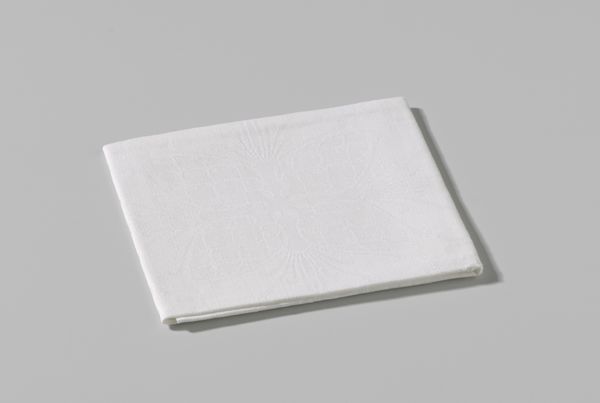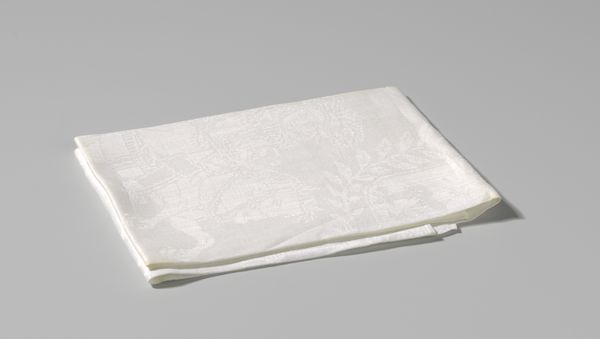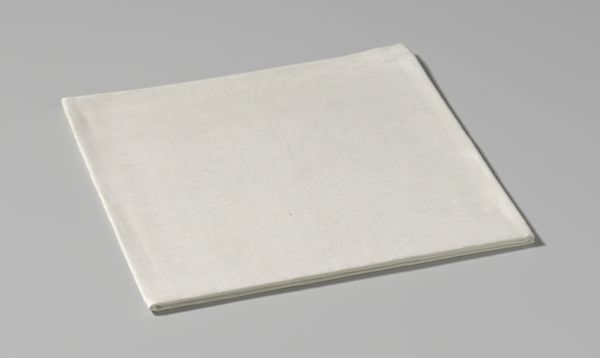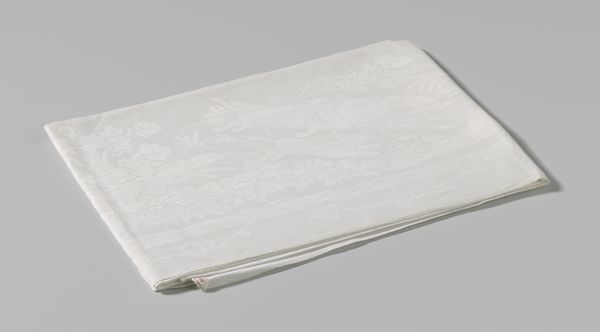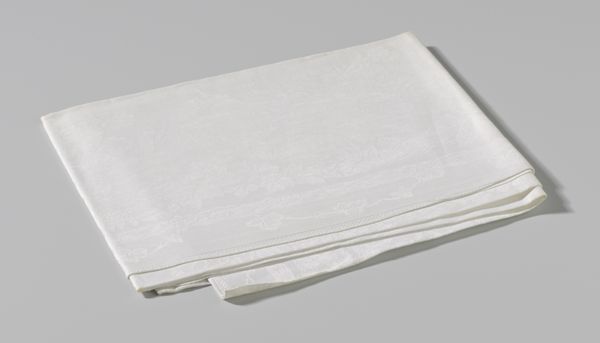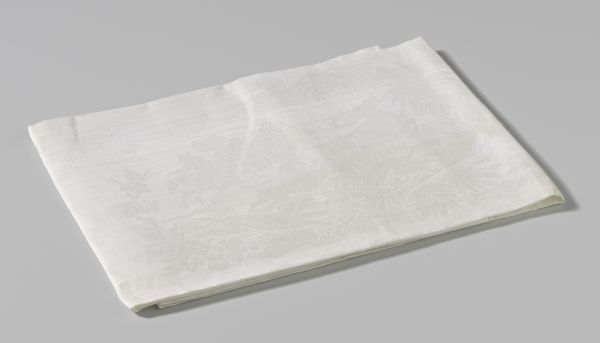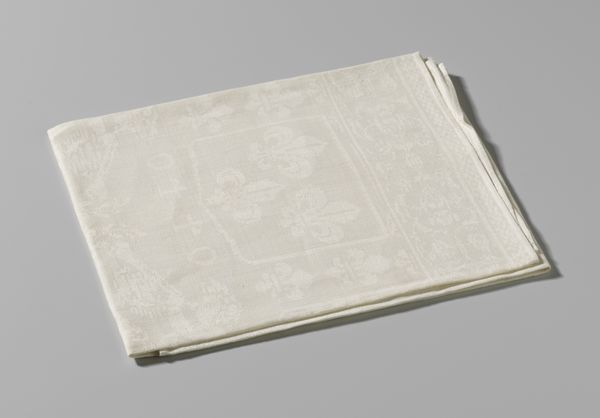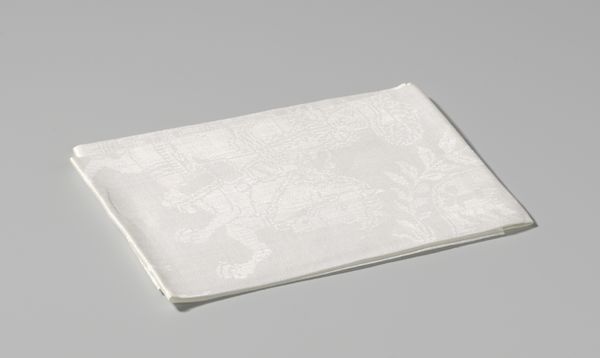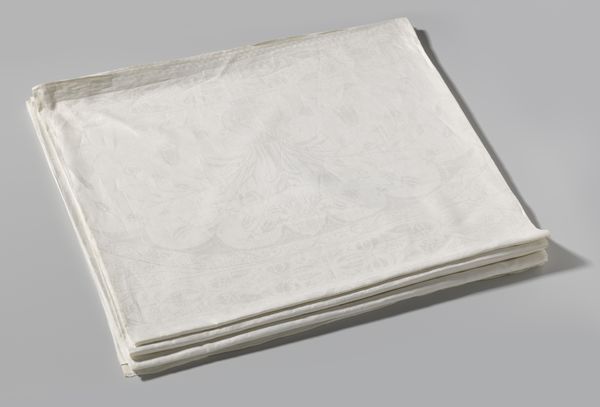
weaving, textile
#
dutch-golden-age
#
weaving
#
textile
Dimensions: length 67.0 cm, width 66.5 cm
Copyright: Rijks Museum: Open Domain
Curator: Here at the Rijksmuseum, we're looking at "Servet van linnendamast met kersen" a linen damask napkin adorned with cherries created around 1900 to 1925, a testament to the artistry of Chris Lebeau. What are your first impressions? Editor: Well, it immediately strikes me as quite minimalist. The almost total absence of color gives it an ethereal, almost ghostly presence. It also seems incredibly fragile. What was the social status of the users of an object like this? Curator: Precisely the questions we must ask! Linens like these, particularly damask with their intricate weaving, signaled a certain level of affluence. This isn't just a napkin; it speaks to a cultivated lifestyle, carefully constructed meals, and a consciousness of status. Think about the labor involved; growing flax, spinning, weaving, and the care required to maintain its pristine condition. Editor: Yes, and the cherries motif, while seemingly innocuous, carries a subtle weight too. Cherries, traditionally associated with themes of temptation, delicacy, and even ephemerality, embedded a complex conversation about desire and abundance into the domestic space. The table wasn't just a site of consumption; it was a theater for social performance, where these anxieties about taste and status played out. Curator: I think Lebeau understood this implicitly, weaving it, quite literally, into the fabric. It invites us to consider the values embedded in seemingly mundane objects, and the ways in which they participate in broader narratives of power and prestige. In museums we sometimes struggle to tell the story of utilitarian art, I'm so pleased the Rijksmuseum keeps pieces like this in its collection. Editor: Definitely. Approaching art history demands that we tease out these interwoven narratives to see the power dynamics influencing their creation. We must consider textiles like these, for example, not just as aesthetic pieces but as deeply encoded with messages. It allows a richer, and more accessible approach to understanding objects of their time. Curator: Precisely, hopefully guests feel challenged and enlightened by the exhibition.
Comments
No comments
Be the first to comment and join the conversation on the ultimate creative platform.

